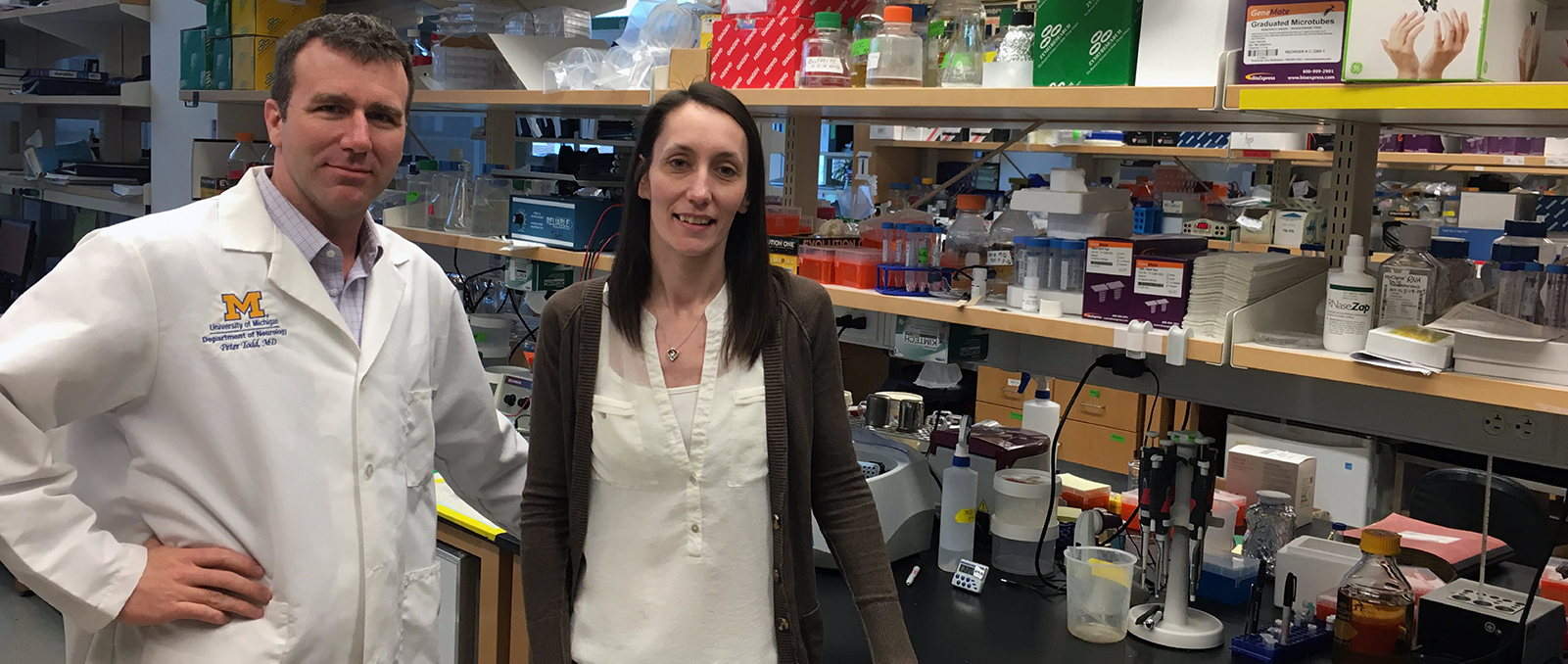CRISPR Reactivation of the Fragile X Gene

DNA makes RNA, RNA makes protein, and proteins drive cell machinery. But what happens when a mutated gene produces nonfunctional protein, or none at all? In Fragile X syndrome, the gene sequence is intact but shut down by epigenetics. Fragile X researcher Peter Todd, MD, PhD, thinks there may be a way to turn the gene back on using CRISPR.
“We are trying to target the first event that goes wrong in Fragile X syndrome”, says Todd, “One reason our previous attempts to develop treatments for Fragile X syndrome have failed is that they’ve tried to target the downstream effects of losing the Fragile X protein. The protein does many things… bypassing all the functions that it normally takes care of has proven difficult from a pharmacologic perspective.”
His innovative approach builds on an enhanced understanding of epigenetic mechanisms of Fragile X and uses CRISPR to target and reactivate the gene to supply normal protein, restoring all the functions of the Fragile X protein.
DNA makes RNA ... Sometimes ...
But what is it about the mutated FMR1 that impairs its function? Seemingly, the DNA blueprint is still there. In fact, there are rare documented cases where the gene is mutated, but the individuals have no clinical symptoms of Fragile X . The DNA of the mutated gene still somehow makes RNA, and the transcribed RNA manufactures the FMRP protein in these instances. But how? Even within the classical Fragile X patient pool, at least 40% of patients exhibit some degree of mosaicism. One variation of the Fragile X mosaic involves inconsistent epigenetic changes to the gene, incomplete and variable from cell to cell, so that FMRP is expressed differently across cells and tissues. And with this variation comes insight.
The Fragile X Gene On/Off Switch
Epigenetics are changes to DNA that go beyond sequence, modifications that coat the DNA and make it more or less accessible to factors that promote transcription of DNA to RNA. Recent studies show that epigenetics control the on/off switch for the mutated FMR1 gene. The first part of Todd’s work involves understanding the detailed mechanism of the epigenetic switch, the key to properly designing the reactivation approach.
A Human Cell Model for Gene Reactivation
While mouse models are very helpful for studying the biologic mechanisms of FXS, mouse epigenetics do not properly reflect human development. The advantage of human embryonic stem cells is that the early events of epigenetic changes can be observed through the process of differentiation from stem cell to neuron. So Todd and postdoctoral associate Jill Haenfler, PhD, supported by FRAXA funding, characterized a new Fragile X human embryonic stem cell (hESC) line, derived by the University of Michigan MStem Cell Laboratories, where the cell line was recently approved by the NIH for federally-funded stem cell research. Todd credits FRAXA with making this important leveraged investment, effectively doubling the number of Fragile X hESC lines publicly available to researchers in the United States.
CRISPR to the Rescue?
While most people think of CRISPR as a gene editing tool, it can also be used to selectively modify DNA function. Why not just edit the gene, clipping off the extra CGG repeats? This would be an irreversible modification, with possible unintended consequences. Todd’s approach is more refined, and can be withdrawn if there are side effects. As Todd studies the mechanisms of Fragile X gene silencing, he and his team also iteratively test CRISPR approaches to target and reactivate different parts of the existing gene machinery, until they find something that effectively boosts the production of FMRP in the simple single cell system.
